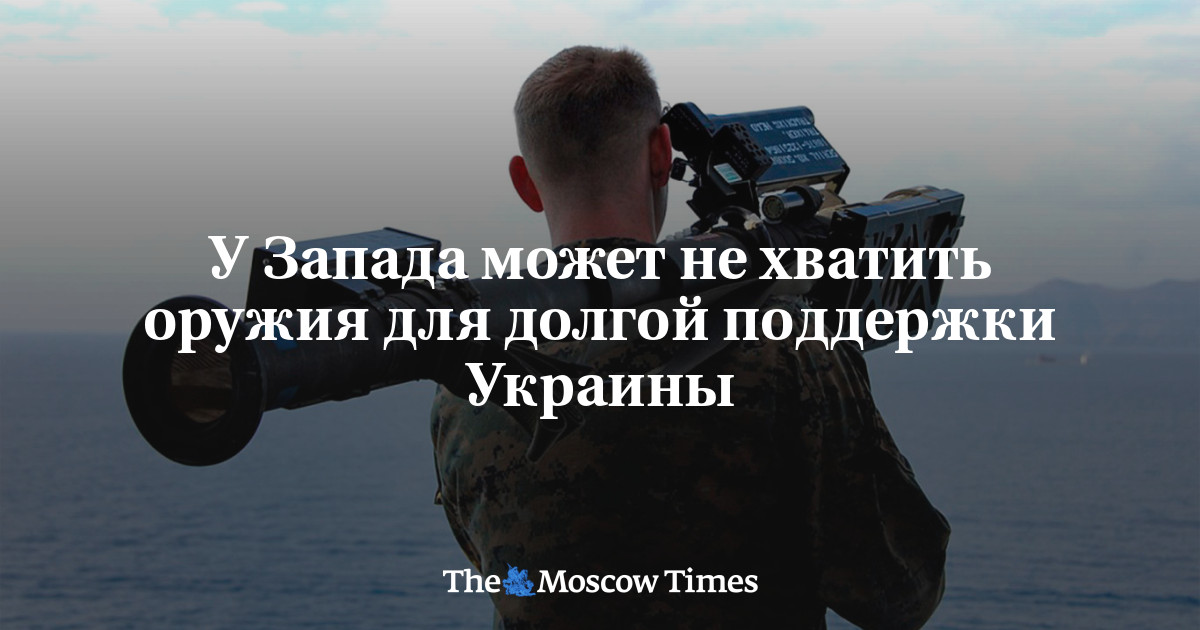In May, when Washington ordered 1,300 Stinger man-portable air defense systems to replace those sent to Ukraine, the CEO of the company that makes them, Raytheon, responded: “It will take some time.” According to the company, some electronic components for the Stingers, mass-produced 20 years ago, are no longer available anywhere to buy.
Meanwhile, Paris sent Kyiv 18 Caesar howitzers, a quarter of its total supply of high-tech artillery. It will take Nexter about a year and a half to produce new ones.
The war in Ukraine has exposed the paucity of weapons supplies in Western countries, especially something as simple as artillery shells. And lack of manufacturing capacity, labor shortages and disruptions in supply chains (especially for computer chips) mean there will be a long wait for those inventories to be replenished. The emphasis in defense policy has been on high-tech weapons and low-cost production, resulting in a shortage of basic ammunition, analysts say.
“Ukraine provided a lesson in reminding us that war is still often won through the classic elements of artillery, ground forces and occupation,” says Jamie Shea, a former NATO director of planning and now an associate fellow at Chatham House.
The arms shortage could impact the West’s ability to continue to provide military support to Kyiv. The annual production of 155-mm shells in the United States would be enough for less than two weeks of fighting in Ukraine, according to procurement expert Alex Vershinin.
“It’s like the great shell crisis of World War I,” says Shea, recalling the scandal of 1915 when British supplies were depleted by the massive use of artillery in what was known as trench warfare. The shortage of shells led to heavy casualties among troops and the resignation of Prime Minister Herbert Henry Asquith.
British Defense Secretary Ben Wallace said it would be difficult for Western countries to fight a protracted war like the Russian-Ukrainian one because their ammunition stockpiles are “inadequate to the threats we face.” Last year, a command post game was held in the UK, which showed that in a full-fledged war the country would run out of ammunition in eight days.
No one, however, believes that the West will exhaust its basic weapons stockpile as a result of their supply to Ukraine. Most of what is provided remains in stock or can be replaced by similar systems, officials say. Russia’s defense spending last year amounted to $66 billion. Meanwhile, in China this figure was $293 billion, and the total defense budget of NATO members exceeded $1.1 trillion.
It is true that much of NATO’s spending has gone toward advanced weapons, such as fighter jets, which the West is not using in this conflict. His defense policy over the past 20 years has been aimed at fighting insurgents in the Middle East, rather than preparing for large-scale tank and artillery battles like in Ukraine.
“The conventional wisdom was that the West would never fight war on an industrial scale again,” says a Western defense consultant. “As a result, almost no one retained the capacity to quickly increase the production of major types of weapons on a national scale.” The UK recently had to buy howitzers for Ukraine from a third party (a Belgian dealer, reportedly). The Pentagon now works with five major defense contractors; in the 1990s there were 51.
As for the multiple launch rocket systems that Kyiv so insistently requests to counter devastating artillery attacks from Russia, the United States has already allocated a third of the stock of 20,000-25,000 missiles.
Russia is also experiencing problems with supplying troops, officials and analysts point out. Uralvagonzavod is reportedly working three shifts restoring old tanks. And ammunition supplies are partially replenished from a large warehouse in Belarus.
However, the recent appointment of Deputy Defense Minister General Gennady Zhidko as commander of Russian forces in Ukraine will provide the military with “strong institutional support in Moscow,” says Mark Galeotti, a Russia specialist and senior fellow at the Royal United Services Institute for Defense Studies:
Now they have a powerful figure to get what they want from the economy.

